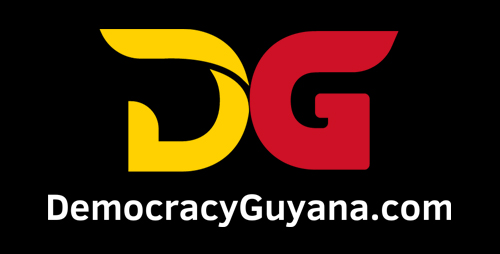THIS past week, we bade farewell to and laid to rest a true Guyanese political icon who gave service to country and party for well over 50 years, via the People’s National Congress Reform (PNCR).
In spite of differences of opinion on many issues of national concern, it’s undeniable that Amna, in her own inimitable style, made a solid contribution to nation building.
In recognition of her contributions, even her avowed (and probably bitter) political rivals paid tribute to her life of service. A conspicuous no show was Aubrey ‘Ebenezer Scrooge’ Norton.
This is more confirmation that Norton does not have leadership qualities befitting the leader of a community group, much less a national party, and certainly not this nation.
He is unable to understand even the elementary nuances of politics, and worse, he is incapable of appreciating the separation between private personal emotions and public responsibility. It’s no secret that for the last two years of Amna’s life, she had a public discordant relationship with Norton.
However, this has little, if anything at all, to do with her over 50 years of service to the PNC. Aubrey ‘Ebenezer Scrooge’ couldn’t find it in his heart to pay simple tribute to half-a-century of service to the organisation he currently leads.
This is tykish juvenility and pettiness of the highest order. It also demonstrates a personality built on Scrooge’s ‘screwfaceism’, a world view that takes a melancholic outlook at interpersonal relationships that is marked by jealousy, anger, revenge, coldness and selfishness to the extent where it is printed on his face almost permanently.
As Hamlet said to Ophelia; “God has given you one face, and you make yourself another”. Cicero referred to facial expression as “a picture of the mind”; a mind incapable of sound, thoughtful and reasoned leadership.
THE ADRIANA CASE
Still, the Number One matter that is gripping the public’s attention is the Adriana Younge case. As a result of its occurring on the heels of unfortunate deaths in Linden, the Guyana Police Force has come under intense scrutiny.
The cumulative post-tragedy demeanour of the Police has led to a crisis of confidence which has found its way up the political chain. I can only communicate my heartfelt feelings and impression to readers of this column. I do not feel an aura of openness and transparency with even the simple low- hanging issues surrounding this case.
The police do not seem to appreciate the complex magnitude of this case. It has, essentially from the beginning, taken a sexpartite form. The police, the family (the offended), the suspected offender, the political leadership, the traditional media and the general public, magnified four-fold by social media.
The police are accustomed to conducting daily investigations almost entirely away from the inquisitive probing lenses of the media and the public.
The police handle probably over 500 interventions on a daily basis, and most days almost none of those interventions go beyond the first two or three named parties. In other words, those in the media and the general public never get to hear or enquire into more than 500 cases every day.
We hear of the occasional case through police releases or matters being heard at the courts by courthouse reporters. Nine out of ten of these cases we take at face value and move on with our lives. What this means is that the police conduct their daily business more like a secret society than a public- interest organisation.
This, perhaps, may explain why when the occasional case which the media and public finds to be bizarre and put on the spotlight, the police seem outside their comfort zone, and the natural reaction would be to employ the modus of a covert brotherhood.
After all, the Adriana case represents one in about 5,000 interventions every ten days. In the natural course of their duties, public accountability is not a stock-in-trade of the Police organisation, so the police may be of the firm and genuine conviction that the sparse and vague communication with the public represents a mammoth effort of going above and beyond the nominal markers of transparency.
The public, turbocharged by social media conspiracy theories, view this case as a giant cover up, thereby fueling a crisis of confidence in the Guyana Police Force, which has certainly scathed the political administration. This points to the need for specialised high-level reforms in police public relations and public accountability processes.
If these reforms do not take place, it wouldn’t matter how well the police conduct their investigations, if the police are continually unable to bring the public along with them, on these high interest cases, the crisis will persist.
The police have a lot of bright professional people in key leadership positions, taking corrective actions is not beyond their capabilities.
Barring the political grandstanding and wild conspiracy theories, there are some objectively reasonable questions from the public that remain largely unanswered. The police should reform their public affairs trajectory, albeit midflight, and substantially address the extant deficit.





